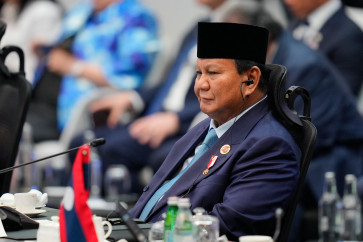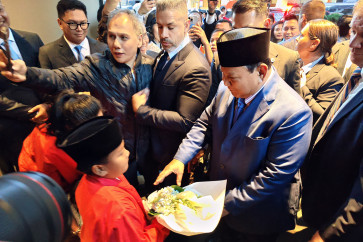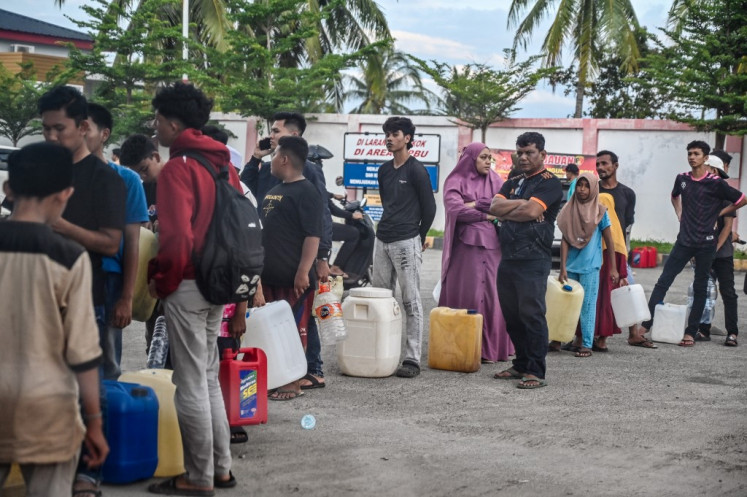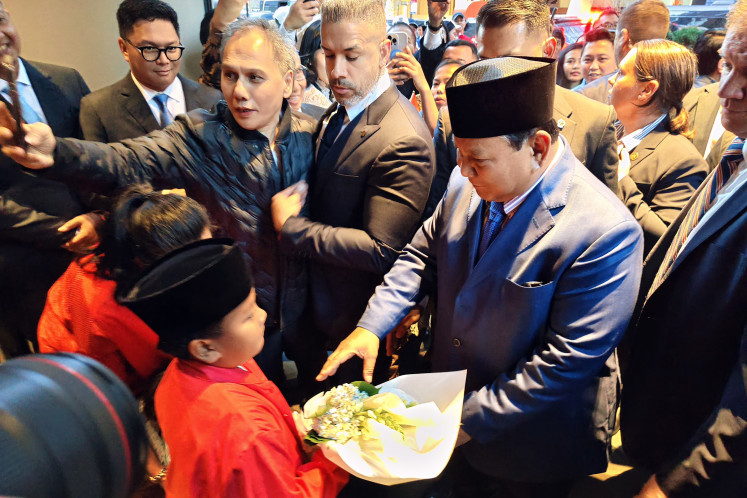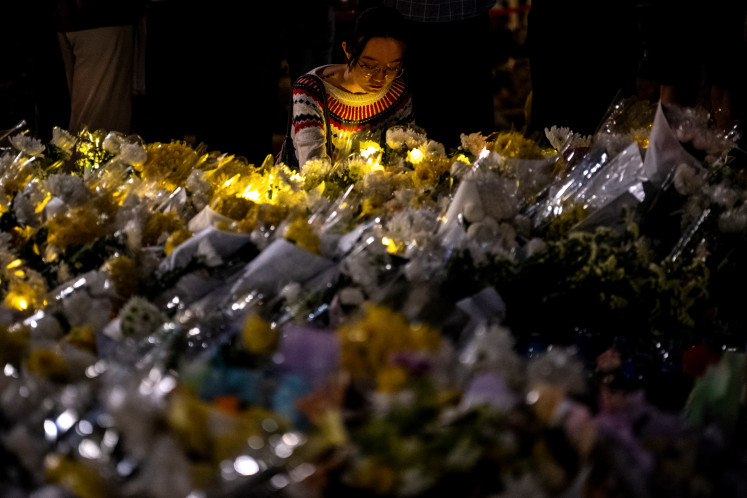Popular Reads
Top Results
Can't find what you're looking for?
View all search resultsPopular Reads
Top Results
Can't find what you're looking for?
View all search resultsGovernment aims to establish 500,000 ha of community forests by 2017
By the riverside: People stand on a riverbank in the Hutan Nagari community forest in Padang Pariaman regency, West Sumatra
Change text size
Gift Premium Articles
to Anyone
B
span class="caption">By the riverside: People stand on a riverbank in the Hutan Nagari community forest in Padang Pariaman regency, West Sumatra. The provincial administration is aiming to see 500,000 hectares of forest managed by indigenous communities by 2017.(JP/Syofiardi Bachyul Jb)
The West Sumatra provincial administration has expressed optimism that it can complete a plan to hand over the management of 500,000 hectares of protected forests to local communities by next year despite the relatively slow progress of the policy, which was initiated in 2012.
West Sumatra Forestry Agency head Hendri Octavia said that three years after the launch of the program, the local administration had been able to introduce community-based forest management for 43,821 ha of forest land, only 19 percent of the designated target.
To meet the full target, Hendri said his agency aimed to complete the establishment of at least 200,000 ha of community-run forests this year and another 200,000 ha next year.
'In 2016, we will deploy 60 field officers assigned with completing the establishment of community-based forest management in at least two locations per year. We are optimistic the target will be met,' Hendri said at a recent media conference.
West Sumatra has 4.3 million ha of forests, with 962,000 ha of them protected forests that have the potential to be converted into production forests under the management of local communities.
In 2012, West Sumatra Governor Irwan Prayitno pledged that his administration would facilitate the conversion of 500,000 ha of protected forests into nagari (village) forests, social forests and community plantation forests (HTRs).
In August 2014, then forestry minister Zulkifli Hasan, for example, officially handed over letters of instruction on the allocation of nagari production forests to four villages in the province, covering a total area of 18,985 ha.
Three of the four villages are located in Solok regency, namely Nagari Sirukam, Nagari Sungai Abu and Nagari Sariak Alahan Tigo. The other village, Nagari Paru, is located in Sijunjung regency.
The latest Environment and Forestry Ministry data, however, shows that between 2012 and 2015, only 32,788 ha were officially declared village forests, 4,098 ha as social forests and 6,935 ha as HTRs.
At least 50,000 ha of forest land is currently awaiting for approval from both local and central government to be administered under local community-based forest management schemes.
'We have a commitment to establish community forests. However, our forest area is vast while at the same time we have a limited number of field officers to implement the policy,' Hendri said.
Indonesian Conservation Community (KKI Warsi) director Diki Kurniawan, meanwhile, urged the local administration to speed up the establishment of community forests in the province, arguing that the policy would better protect forests from various threats, particularly forest fires and illegal logging.
'The management of [community] forests rely on local customs. This is partly the reason West Sumatra did not see extensive forest fires last year,' he said.
Last year, many provinces, such as Riau, Jambi, North Sumatra, South Sumatra and Central Kalimantan, struggled for several months to cope with the impacts of smoke from both man-made and natural land and forest fires in their respective and neighboring areas.
The disaster was also exacerbated by last year's long dry season triggered by the El Niño weather phenomenon.



